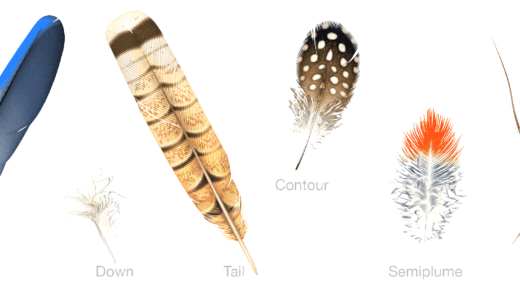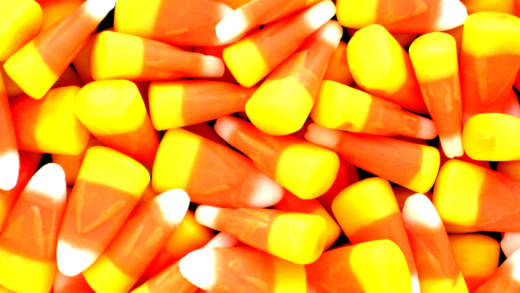NASCAR inspections are critical for maintaining fairness in racing. Pre-race inspections ensure compliance before the race, while post-race checks validate results and prevent illegal modifications. Teams prepare rigorously for inspections, facing serious consequences for failures, including penalties and reputational damage. Real-life examples illustrate the inspection process’s importance and its impact on the sport.
Pre-Race Inspections: What Are They?
NASCAR inspection process begins with pre-race inspections, which are crucial for ensuring that each vehicle meets the set standards. These inspections happen before the race starts and involve a thorough examination of the car’s components. The main goal is to guarantee compliance with NASCAR regulations, maintaining a level playing field for all competitors.
During the pre-race inspection, NASCAR officials check various elements, including:
- Weight of the car
- Dimensions and aerodynamics
- Safety features
- Engine specifications
Teams prepare extensively for this process, ensuring every aspect of their vehicles is up to standard. Cars that pass inspection can compete, while those that fail must make adjustments before they are allowed to race.
Post-Race Inspections: Why They Matter
Post-race inspections are just as critical as pre-race checks in the NASCAR inspection process. These inspections occur after the race to confirm that the winning cars adhered to all regulations. They serve to uphold the integrity of the sport, ensuring that no team gains an unfair advantage through illegal modifications.
Key reasons why post-race inspections matter include:
- Verification of race results
- Ensuring compliance with technical specifications
- Maintaining fairness among competitors
In recent years, there have been notable cases where post-race inspections led to disqualifications, reinforcing the importance of this procedure. It is a vital step in promoting transparency and trust in NASCAR.
How Cars Are Selected for Inspection
Understanding how cars are selected for inspection is a key aspect of the NASCAR inspection process. Not all cars are inspected; instead, NASCAR employs a strategic approach to determine which vehicles undergo scrutiny. Selection is based on various factors, including:
- Finishing positions in the previous race
- Random selection methods
- Performance metrics during practice sessions
This selection process ensures that a mix of top performers and randomly chosen cars are inspected, maintaining fairness and accountability in the sport. Teams must always be prepared, as any car can be called for inspection.
Key Elements Checked During Inspections
The NASCAR inspection process involves checking several key elements that ensure a car meets the required standards. Inspectors focus on the following aspects:
- Weight and balance
- Bodywork and aerodynamics
- Safety equipment, including seat belts and roll cages
- Engine and fuel specifications
Each component must comply with NASCAR regulations. Failing to meet these standards can lead to penalties, including fines and disqualifications.
Consequences of Failing Inspections
Failing NASCAR inspection can have serious repercussions for teams. If a car does not pass inspection, several consequences can occur, such as:
- Disqualification from the race
- Fines imposed on the team
- Loss of points in the championship standings
These penalties highlight the importance of adhering to NASCAR’s stringent regulations. Teams must carefully prepare their cars to avoid these outcomes, as a single failed inspection can significantly impact their season.
Preparing Cars for Inspection: Tips from the Pros
NASCAR inspection process requires teams to prepare their cars meticulously before inspections. This preparation is essential to ensure compliance with NASCAR regulations. Here are some tips from the pros on how teams get their vehicles ready:
- Detailed Checklists: Teams often create comprehensive checklists outlining every component that needs inspection. This includes elements like tire pressure, weight distribution, and safety equipment.
- Regular Practice Runs: Conducting practice sessions allows teams to identify potential issues with their cars. These runs help fine-tune performance and ensure everything is functioning correctly.
- Collaboration with Engineers: Close collaboration between drivers and engineers is crucial. Engineers provide insights on necessary adjustments to enhance performance and compliance.
- Focus on Safety: Ensuring safety features are in top condition is non-negotiable. Teams check seat belts, helmets, and roll cages to guarantee driver safety.
By following these tips, teams increase their chances of passing inspections, thereby enhancing their competitiveness on race day.
Tools and Technology Used in Inspections
The NASCAR inspection process employs various tools and technology to ensure cars meet specific standards. These instruments play a crucial role in maintaining fairness and compliance. Key tools include:
- Laser Measuring Systems: These systems provide precise measurements of car dimensions, ensuring compliance with NASCAR’s aerodynamic standards.
- Weight Scales: Teams use advanced scales to measure the weight of the cars accurately. This ensures that they meet the minimum weight requirements set by NASCAR.
- Computers and Software: Data analysis software helps teams analyze performance metrics and identify potential issues before inspections.
- Safety Equipment Testing Devices: Tools that test the integrity of safety gear, including seat belts and helmets, are vital to ensure driver protection.
These tools enhance the accuracy and efficiency of the inspection process, ensuring that every vehicle is up to standard.
The Role of NASCAR Officials in Inspections
NASCAR officials play a critical role in the inspection process, ensuring that all vehicles comply with regulations. Their responsibilities include:
- Conducting Inspections: Officials perform thorough inspections before and after races, checking for compliance with technical specifications.
- Enforcing Regulations: They enforce NASCAR rules, ensuring that no team has an unfair advantage through illegal modifications.
- Making Decisions: Officials have the authority to disqualify cars that fail inspections or do not meet safety standards.
- Providing Guidance: They offer guidance to teams regarding compliance, helping to clarify any ambiguities in the rules.
Their presence ensures integrity within the sport, maintaining a fair competitive environment for all teams.
Evolution of the NASCAR Inspection Process
The NASCAR inspection process has evolved significantly over the years, adapting to advancements in technology and changes in regulations. Key developments include:
- Increased Automation: The introduction of automated systems has improved the efficiency and accuracy of inspections.
- Enhanced Safety Standards: Over the years, NASCAR has implemented stricter safety regulations, leading to more rigorous inspections of safety equipment.
- More Transparent Procedures: Recent changes have focused on making the inspection process more transparent to teams and fans, fostering trust in the system.
- Use of Data Analytics: Teams now utilize data analytics to prepare for inspections, ensuring better compliance and performance analysis.
This evolution reflects NASCAR’s commitment to maintaining a fair and competitive environment while prioritizing safety.
Ensuring Fairness and Compliance in NASCAR
NASCAR takes significant measures to ensure fairness and compliance during inspections. These measures include:
- Random Inspections: By randomly selecting cars for inspection, NASCAR promotes fairness, ensuring that all teams are subject to the same scrutiny.
- Consistent Enforcement: Officials enforce regulations consistently across all teams, preventing favoritism or bias.
- Regular Updates to Rules: NASCAR continuously reviews and updates regulations to address emerging issues and maintain a level playing field.
- Collaboration with Teams: Engaging with teams to discuss rules and compliance fosters a cooperative atmosphere and encourages adherence to regulations.
These strategies reinforce NASCAR’s dedication to fairness, ensuring that every race is competitive and just.
What Happens After a Failed Inspection?
NASCAR inspection process is stringent, and failing an inspection can lead to significant consequences for teams. When a car does not pass inspection, the implications are immediate and serious. The first step usually involves the officials communicating the failure to the team, detailing which aspects did not meet the NASCAR standards.
Following a failed inspection, teams face several potential outcomes, including:
- Mandatory Adjustments: Teams must address the specific issues that led to the failure. This could involve making physical modifications to the car or replacing certain components.
- Re-inspection: After making the necessary adjustments, the car must undergo another inspection to ensure compliance before it can race.
- Penalties: Depending on the severity of the failure, teams may incur penalties such as fines or loss of championship points. This can significantly impact their standing in the series.
- Public Scrutiny: Failed inspections often attract media attention, which can affect a team’s reputation and sponsor relations.
Ultimately, teams must take failed inspections seriously, as they can alter the course of a season and affect long-term strategies.
Real-Life Examples of NASCAR Inspections
Real-life cases of NASCAR inspections highlight the importance of this process and the consequences of non-compliance. One notable example occurred during the 2019 season when a prominent team faced disqualification after post-race inspections revealed illegal modifications to their car.
Another instance involved a driver who was stripped of his win due to a failed post-race inspection that identified discrepancies in the car’s weight. These examples underscore how stringent the NASCAR inspection process is and how it is designed to uphold fairness in racing.
In addition, teams often share their experiences with inspections to emphasize the importance of adhering to NASCAR regulations. For instance, many teams discuss their preparation strategies and how they ensure compliance, illustrating the proactive approach necessary to avoid failures during inspections.
These real-life scenarios serve as cautionary tales for teams and provide valuable lessons on the importance of thorough preparation and adherence to NASCAR’s rules.





Comments are closed.